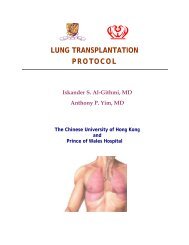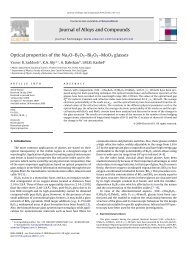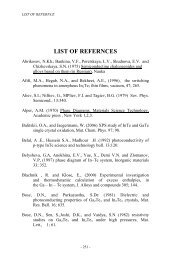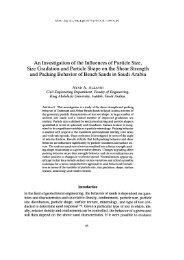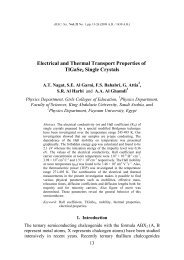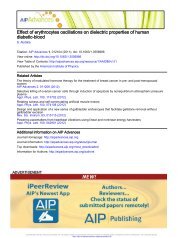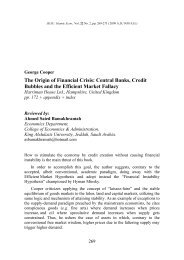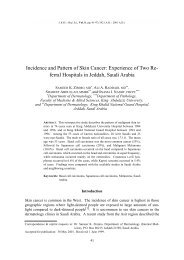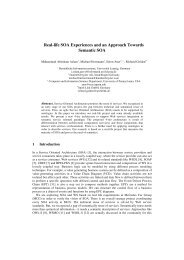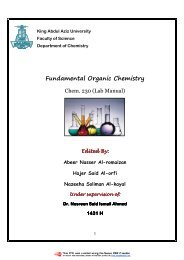A Qur'anic Model for a Universal Economic Theory
A Qur'anic Model for a Universal Economic Theory
A Qur'anic Model for a Universal Economic Theory
Create successful ePaper yourself
Turn your PDF publications into a flip-book with our unique Google optimized e-Paper software.
A Qur’anic <strong>Model</strong> <strong>for</strong> a <strong>Universal</strong> <strong>Economic</strong> <strong>Theory</strong> 37<br />
The fact that the positive Muslim has two distinct functions to maximize, between<br />
which his actions oscillate, is a significant result with very important methodological<br />
implications <strong>for</strong> Islamic economics. I have dealt with these methodological issues in my<br />
paper named "The Dynamic Interaction Between Social <strong>Theory</strong> and Social Change: an<br />
Islamic Perspective". An Islamic economic theory based on the duality of the human<br />
self as described by the Holy Qur'an is a universal theory because it covers both<br />
orthodox Western economic theory based on the 'pleasure' function, and the new<br />
economics based on the iman function. Thus Western economics becomes a legitimate<br />
part of the more general Islamic economics that will be used to explain the economic<br />
actions of the positive Muslim when such actions are located within the domain of the<br />
pleasure function. The most pressing need now is to specify the iman function as an<br />
Islamic theory of rationality. Unlike the 'pleasure' function, the iman function is a<br />
generalized function of rational choice that is applicable to all situations in all domains<br />
of life. Again, unlike the 'pleasure' function which is maximized by the mundane<br />
pleasures derivable from consuming material goods, the iman function is maximized by<br />
good deeds irrespective of whether these deeds are pleasurable or not. As a matter of<br />
fact a sizable part of the Islamically good deeds is not pleasurable to the self that is not<br />
enshrouded by iman; <strong>for</strong> example, prayer, fasting, alms-giving and almost all the<br />
Islamic injunctions of do's and don'ts in the economic domain or otherwise are<br />
unpleasurable to the self, hence the unmeasurable reward in the Judgment Day <strong>for</strong> those<br />
who display the patience necessary <strong>for</strong> carrying out good deeds. Furthermore the iman<br />
function can be maximized at the level of intention in an action even if the physical<br />
aspect of this action did not materialize. This is not the case with the 'pleasure' function<br />
which is maximized only when the physical aspect of the action is realized as intended.<br />
The axioms of rationality which Western economic theory ascribed to the maximizer of<br />
the utility function and which gave it its mathematical elegance seem to befit the<br />
maximizer of the iman function more genuinely.<br />
We conclude this paper by summarizing its outstanding relationships in a chart<br />
that brings out its full potential as a comprehensive scientific research program (SRP) in<br />
the Lakatosian sense in Islamic economics. The chart summarizes the two approaches to<br />
life as depicted in the MPC. Thus at the top of the page we have 'dunya' from which<br />
branches the two inputs of wealth and children. These two inputs are then linked to the<br />
third input which is the human self. The latter is disaggregated into its two main<br />
domains, the domain of righteous deeds and that of whimsical deeds. It is the<br />
combination of these four inputs, wealth, children, the righteous self and the wrongprone<br />
self that give the test involved in the MPC its true <strong>for</strong>ce. The normative Islamic<br />
process of individual and social actions is depicted by the column of boxes on the r.h.s.<br />
of the chart. All <strong>for</strong>ms of non-Islamic actions are represented by the column of boxes on<br />
the I.h.s. of the chart. The process of positive actions by the Muslim individual or<br />
society is represented by the column of boxes at the center of the chart. As can be seen,<br />
the latter is a process of actions that results from having strong influences from the two<br />
domains of the human self. The normative Islamic process of maximization is embodied<br />
in the normative iman function, while the non-Islamic maximization process is<br />
represented by the positive pleasure function. The actual maximization process of a<br />
positive Muslim (center column) essentially involves a process where the two functions<br />
of iman and pleasure alternate in determining the patterns of a Muslim's actions.



